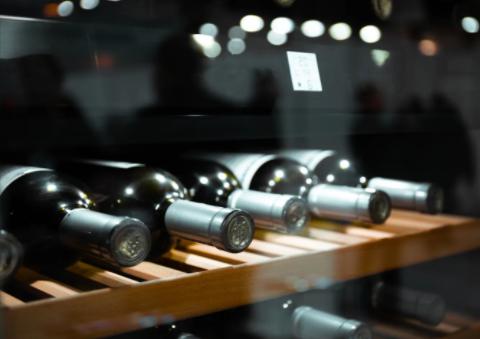Wine Serving Temperature Guide 2023 - Reds, Whites & Sparkling
Indulging in a glass of wine is an experience shaped by more than just the grape variety. The temperature at which you serve your wine can unlock a symphony of flavors or leave them dormant. Just as a chilled lemonade revives the senses, what temperature for red wine or white wine is served can either elevate or mask its nuances. In this guide, we unravel the art of serving wine at the ideal temperature. From the vibrancy of reds to the elegance of whites and the effervescence of sparkling varieties, let's explore how temperature shapes the essence of every sip.

Ideal Serving Temperature for Different Wine
Each wine type has an optimal temperature that unlocks its full bouquet of aromas and flavors. Whether you're sipping a classic red, a delicate white, or the effervescent charm of sparkling wine, temperature matters. Here we tested and summarized the best temperature for some common types of wine.
Best Temperature for Red Wines
Red wines, with their diverse range of body and complexity, require careful temperature consideration. So what temperature should red wine be served at? Typically, red wines are served between 55°F and 65°F (13-18 Degrees Celsius).
Among them, lighter reds like Zinfandel, Chianti, and Pinot Noir flourish between 55 and 56 degrees Fahrenheit (12-13 degrees Celsius). These slightly chilled temperatures accentuate their fruity and aromatic characteristics.
Medium-bodied reds, such as Merlot and Sangiovese, thrive between 56 and 60 degrees Fahrenheit (13-16 degrees Celsius). This temperature red wine range preserves their balance between fruitiness and structure, allowing their nuances to shine.
For full-bodied reds like Bordeaux and Cabernet Sauvignon, the ideal range is 61-65 degrees Fahrenheit (16-18 degrees Celsius). At these red wine temperatures, the rich flavors and tannins are coaxed to perfection.
Best Temperature for White Wines
White wines are equally particular about their serving temperature. They're generally served between 45°F and 55°F (7-13 Degrees Celsius). Lighter whites like Sauvignon Blanc and Pinot Grigio flourish between 45 and 50 degrees Fahrenheit (7-10 degrees Celsius). This chill preserves their refreshing acidity and crispness, making them delightful companions for warm days.
Moving to more full-bodied whites, such as Chardonnay and Montrachet, the range shifts to 50-55 degrees Fahrenheit (10-13 degrees Celsius). This touch of warmth allows their complexities to unfold, offering a richer and more layered tasting experience.

Best Temperature for Sparkling Wines
Sparkling wines are all about celebration, and their serving temperature plays a vital role in their allure. Champagne, Prosecco, and other sparkling varieties shine when served at 43-47 degrees Fahrenheit (6-8 degrees Celsius). This icy coolness ensures that the bubbles remain vivacious and the flavors are refreshing.
At last, remember that the serving temperature isn't a fixed rule; it's a canvas for you to experiment and discover the symphony of flavors that lie within each bottle. Proper temperature ensures that every glass is a journey into the heart of the wine's character.
Should the Wine Also Be Stored at Different Temperatures?
While serving temperatures vary for different wine types, the story changes when it comes to storage. Surprisingly, most wines find their happy place at a consistent 55 degrees Fahrenheit (13 degrees Celsius). Furthermore, keeping your wines at a stable temperature is key to preserving their integrity and flavors. Fluctuations in storage temperature can lead to premature aging or even spoilage. So, whether it's a delicate white or a robust red, the wine's home in your cellar should be a cool and consistent haven.

How to Ensure the Best Serving Temperature of the Wine?
Serving wines at the ideal temperature is an ingenious art that significantly affects the taste. Here are some practical tips to help you get there:
- Know the Optimal Range: Different wines have distinct optimal serving temperatures. Understand the general ideal serving temperatures for different wine types - reds, whites, and sparkling wines. This fundamental knowledge sets the stage for a gratifying wine experience.
- Invest in a Wine Thermometer: A wine thermometer is an indispensable tool. It provides precise temperature readings, ensuring you serve each bottle at its peak. This investment guarantees consistency and enhances your wine enjoyment.
- Use Guidelines: If a wine thermometer isn't available, you can still approximate ideal serving temperatures. Chill whites and sparklings in the refrigerator for a few hours, allowing them to reach the recommended range. For reds, remove them from storage well in advance to let them gradually warm to the desired temperature.
- Experiment and Learn: Taste wines across a temperature spectrum to grasp how temperature influences their character. By keeping a wine journal, you can record your observations and preferences. This experiential approach sharpens your ability to discern nuances at varying temperatures.
- Avoid Extreme Fluctuations: Consistency is key when storing wines. Aim for cellar temperatures around 55°F (13°C) to maintain wine quality and aging potential. Extreme fluctuations, such as rapid heating or cooling, can adversely affect the wine's chemistry.
- Adjust as Needed: Trust your senses. If a wine emits a strong alcohol smell, it might be too warm; a brief chill can mitigate this. Conversely, if a wine appears lackluster in flavor, particularly noticeable in reds stored in the fridge, a slight warming can amplify its taste.
- Serve Mindfully: Strive for balance. White wines that are too cold may suppress their complexities, while reds served too warm can overpower their subtleties. Strive for a harmonious middle ground to ensure a well-rounded tasting experience.
Conclusion
Now we know what temperature for red wine or white wine is often served at in life and know some useful tips to store and serve wines. In the world of wine, the temperature isn't just a number - it's a maestro conducting a sensory symphony. The right white and red wine temperature can awaken intricate flavors or shroud them in mystery. From the boldness of reds to the subtleties of whites and the effervescence of sparkling wonders, serving wine is the life experience woven with temperature's touch. As you uncork and pour, remember that each sip carries the essence of the grape, nurtured by the warmth or coolness of your choice.
